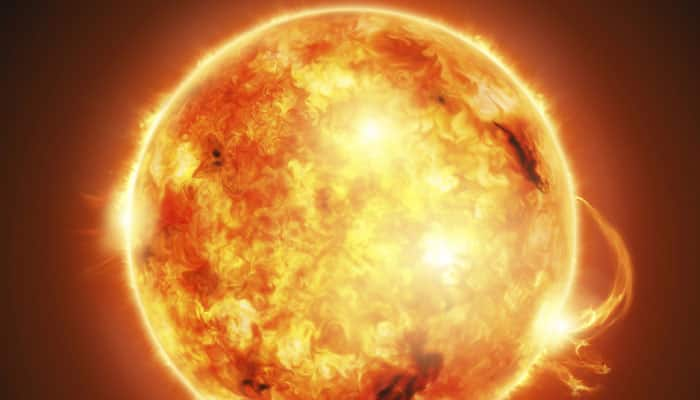Washington: A new research has provided a deeper insight into how artificial intelligence can help physicists predict hazardous solarflares.
Though scientists do not completely understand what triggers solar flares, Stanford solar physicists Monica Bobra and Sebastien Couvidat have automated the analysis of those gigantic explosions. The method could someday provide advance warning to protect power grids and communication satellites.
Solar flares can release the energy equivalent of many atomic bombs, enough to cut out satellite communications and damage power grids on Earth, 93 million miles away.
The flares arise from twisted magnetic fields that occur all over the sun's surface, and they increase in frequency every 11 years, a cycle that is now at its maximum.
Using artificial intelligence techniques, Stanford solar physicists Monica Bobra and Sebastien Couvidat have automated the analysis of the largest ever set of solar observations to forecast solar flares using data from the Solar Dynamics Observatory (SDO), which takes more data than any other satellite in NASA history. Their study identifies which features are most useful for predicting solar flares.
Specifically, their study required analyzing vector magnetic field data. Historically, instruments measured the line-of-sight component of the solar magnetic field, an approach that showed only the amplitude of the field. Later, instruments showed the strength and direction of the fields, called vector magnetic fields, but for only a small part of the sun, or part of the time.
Now an instrument on a satellite-based system, the Helioseismic Magnetic Imager (HMI) aboard SDO, collects vector magnetic fields and other observations of the entire sun almost continuously.
The researchers catalogued flaring and non-flaring regions from a database of more than 2,000 active regions and then characterized those regions by 25 features such as energy, current and field gradient. They then fed the learning machine 70 percent of the data, to train it to identify relevant features. And then they used the machine to analyze the remaining 30 percent of the data to test its accuracy in predicting solar flares.
Machine learning confirmed that the topology of the magnetic field and the energy stored in the magnetic field are very relevant to predicting solar flares. Using just a few of the 25 features, machine learning discriminated between active regions that would flare and those that would not flare.
Although others have used different methods to come up with similar results, machine learning provides a significant improvement because automated analysis is faster and could provide earlier warnings of solar flares.
However, this study only used information from the solar surface. That would be like trying to predict Earth's weather from only surface measurements like temperature, without considering the wind and cloud cover.
















